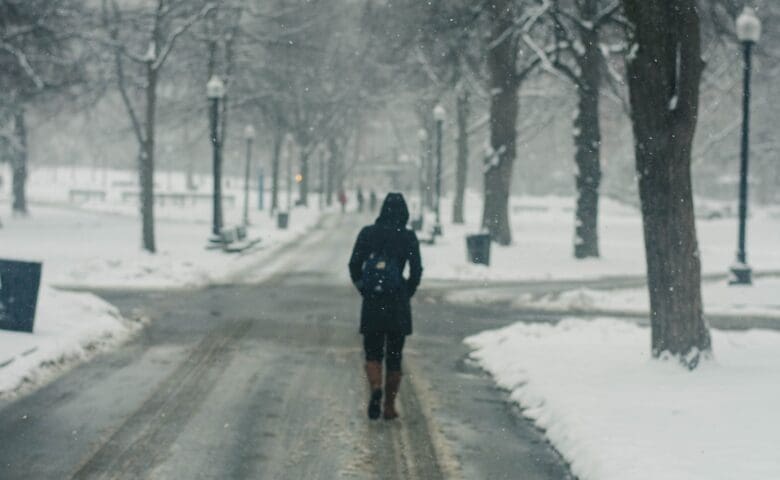Getting to work in winter weather
Snow, rain or ice , as well as lower light levels or glare from the low sun are all conditions that can make the winter commute very hazardous.
Driving in these types of weather can be extremely stressful and require a lot of concentration. However, there is some sensible advice to be followed to try to make your commute as safe and calm as possible.
Give yourself extra time: Rushing is a main cause of mistakes and feeling under pressure to arrive on time can cause you to speed. In winter, this can be even more dangerous than speeding in normal conditions. Remember that in snowy and icy conditions in particular, you should drive slower than you normally would, traffic is likely to be heavier and slower moving and you may need to take a detour. All of these factors may add time to your journey that should be allowed for.
Clear your car properly: All windows and mirrors should be completely clear of any ice, snow or fog and you should make sure there is no snow left on the roof of your car as this can drop on to the windscreen when you are driving. Driving your car when windows, mirrors and windscreens are not clear is an offence that can add three points to your license.
Keep speed down and stopping distances greater than usual: Corners should be taken extra slowly and remember that safe stopping distances are doubled in wet conditions and can be up to ten times greater in icy conditions.
Keep steady and in control: Try to avoid heavy acceleration, braking and steering in bad weather conditions. Carry out any maneuvers slowly and with great care. Make sure that you are always aware of your surroundings as pedestrians, cyclists, motorcyclists and other cars can be harder than usual to see.
Keep an emergency kit in the car: Winter weather can be unpredictable and it is not unheard of for people to become stuck due to impassable roads or breaking down with long recovery times. This is why it is vital that you keep a winter emergency kit in the car. This should include: Torches and batteries, warm clothing and blankets, hi-vis jackets, jump leads, food and drink and a spade.

